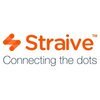Filter interviews by
Acuity Knowledge Partners Interview Questions and Answers
122 Interview questions
The largest stock exchange in the world is the New York Stock Exchange (NYSE), known for its vast market capitalization and trading volume.
The NYSE is located on Wall Street in New York City.
It has a market capitalization of over $25 trillion.
The NYSE lists more than 2,800 companies, including major corporations like Apple and Microsoft.
Trading on the NYSE occurs through a hybrid model of floor trading and electro...
Emerging markets are economies in transition, characterized by rapid growth and industrialization, often with increasing investment opportunities.
Emerging markets typically have lower income levels compared to developed countries.
They often experience higher economic growth rates; for example, India and Brazil.
These markets may have less mature financial systems and regulatory frameworks.
Emerging markets can attra...
A junk bond is a high-risk, high-yield bond rated below investment grade, often issued by companies with poor credit ratings.
Junk bonds are rated 'BB' or lower by credit rating agencies like S&P and Moody's.
They offer higher interest rates to compensate for increased risk of default.
Example: A company with financial struggles may issue junk bonds to raise capital quickly.
Investors in junk bonds seek higher ret...
Alpha, beta, and Sharpe ratio are key metrics in finance for assessing investment performance and risk.
Alpha measures an investment's performance relative to a benchmark index. For example, an alpha of 1.0 indicates outperformance by 1%.
Beta measures an investment's volatility compared to the market. A beta of 1 means the investment moves with the market; a beta of 1.5 indicates 50% more volatility.
The Sharpe rati...
Investment strategies include various approaches to managing assets for growth, income, or risk management.
1. Value Investing: Buying undervalued stocks, e.g., Warren Buffett's approach.
2. Growth Investing: Focusing on companies with high growth potential, like tech startups.
3. Income Investing: Prioritizing investments that provide regular income, such as dividend stocks or bonds.
4. Index Investing: Investing in ...
Asset classes are categories of investments with similar characteristics, risk profiles, and market behaviors.
Equities: Stocks representing ownership in companies (e.g., Apple, Microsoft).
Fixed Income: Debt securities like bonds that pay interest (e.g., U.S. Treasury bonds).
Real Estate: Physical properties or real estate investment trusts (REITs).
Commodities: Physical goods like gold, oil, or agricultural products...
Financial statements provide a structured representation of the financial performance and position of a business.
Balance Sheet: Shows the company's assets, liabilities, and equity at a specific point in time. Example: Assets = $500,000, Liabilities = $300,000, Equity = $200,000.
Income Statement: Reports the company's revenues and expenses over a period, indicating profitability. Example: Revenue = $1,000,000, Expe...
The three financial statements—income statement, balance sheet, and cash flow statement—are interconnected and provide a comprehensive view of a company's financial health.
Income Statement: Shows the company's revenues and expenses over a specific period, leading to net income, which affects retained earnings on the balance sheet.
Balance Sheet: Provides a snapshot of the company's assets, liabilities, and equity a...
Revenue forecasting involves analyzing historical data, market trends, and financial models to predict future income.
Analyze historical sales data to identify trends and seasonality.
Use market research to understand industry growth rates and consumer behavior.
Implement quantitative methods like regression analysis to model revenue.
Consider macroeconomic factors such as GDP growth and unemployment rates.
Utilize sce...
Working capital forecasting involves predicting a company's short-term financial health and operational efficiency.
Analyze historical data: Review past financial statements to identify trends in receivables, payables, and inventory.
Consider seasonality: Adjust forecasts based on seasonal sales patterns, like increased inventory before holidays.
Monitor cash conversion cycle: Calculate the time taken to convert inve...
Acuity Knowledge Partners Interview Experiences
160 interviews found
(2 Questions)
- Q1. Qn on fin statements. Given a situation how it would impact three fin statements
- Ans.
Changes in a situation can impact financial statements differently
Changes in revenue will impact income statement by affecting net income
Changes in inventory levels will impact balance sheet by affecting assets
Changes in debt levels will impact cash flow statement by affecting financing activities
- Q2. Qn on DCF
- Ans.
Discounted Cash Flow (DCF) is a valuation method used to estimate the value of an investment based on its future cash flows.
DCF calculates the present value of expected future cash flows by discounting them back to their current value.
It takes into account the time value of money, risk, and opportunity cost of capital.
The formula for DCF is: DCF = CF1/(1+r)^1 + CF2/(1+r)^2 + ... + CFn/(1+r)^n, where CF is cash flow and...
(1 Question)
- Q1. Case interview focused on calculating the financial aspects of a coffee shop, from fund sourcing to profit calculation,EDA (Excel or paper were not permitted for calculations). the interviewer aimed to a...
Interview Preparation Tips
I applied via Naukri.com and was interviewed in Aug 2024. There were 2 interview rounds.
(3 Questions)
- Q1. What are Covenants in Commercial Lending
- Ans.
Covenants in commercial lending are conditions set by lenders that borrowers must meet to maintain the loan agreement.
Covenants are financial ratios or performance metrics that borrowers must adhere to
They are designed to protect the lender by ensuring the borrower remains financially stable
Examples include debt-to-equity ratio, interest coverage ratio, and minimum liquidity requirements
- Q2. What is the difference between Bank Guarantee and Letter of Credit
- Ans.
Bank Guarantee is a guarantee from a bank that a borrower will fulfill their financial obligations, while Letter of Credit is a payment method where the bank guarantees payment to the seller.
Bank Guarantee is a guarantee provided by a bank to a beneficiary in case the applicant fails to fulfill their obligations.
Letter of Credit is a payment method where the bank guarantees payment to the seller upon presentation of sp...
- Q3. What is Collateral in Commercial Lending
- Ans.
Collateral in commercial lending refers to assets that a borrower pledges to a lender as security for a loan.
Collateral can include real estate, equipment, inventory, accounts receivable, or other valuable assets.
The lender can seize and sell the collateral if the borrower defaults on the loan.
Collateral helps reduce the lender's risk and allows borrowers to access financing at lower interest rates.
The value of the col...
(3 Questions)
- Q1. Self Introduction
- Q2. Situation based questions like Conflict of interest amongst team members, How to handle in case of high volumes, Any new updates on Secondary Loan Trading
- Q3. What is a Credit Agreement
- Ans.
A Credit Agreement is a contract between a borrower and a lender outlining the terms and conditions for a loan.
It specifies the amount of the loan, interest rate, repayment schedule, and any collateral required.
The agreement also includes provisions for default, late payments, and other consequences.
Credit agreements can be for various types of loans, such as mortgages, car loans, or personal loans.
Interview Preparation Tips
- Commercial lending
- Collateral Management
- Credit Agreement
I applied via Referral and was interviewed in Jul 2024. There was 1 interview round.
(5 Questions)
- Q1. How will you measure credit worthiness of a company
- Ans.
Credit worthiness of a company can be measured by analyzing financial statements, credit history, industry trends, and management quality.
Review financial statements such as balance sheet, income statement, and cash flow statement to assess profitability, liquidity, and leverage.
Check credit history including payment history, outstanding debts, and credit utilization ratio.
Evaluate industry trends and economic conditio...
- Q2. How many profits are there in income statement
- Ans.
There are two types of profits in an income statement: gross profit and net profit.
Gross profit is the difference between revenue and the cost of goods sold.
Net profit is the remaining amount after deducting all expenses from the gross profit.
Both profits are important indicators of a company's financial performance.
- Q3. Which profit will you take in to consideration for giving loan to a company
- Ans.
The profit considered for giving a loan to a company includes net profit, operating profit, and EBITDA.
Net profit: Indicates the overall profitability of the company after all expenses are deducted from revenue.
Operating profit: Shows the profit from the core business operations before interest and taxes.
EBITDA (Earnings Before Interest, Taxes, Depreciation, and Amortization): Reflects the company's operating performan...
- Q4. What will be the effect in cost of goods sold if a company has bought raw materials in cheaper rate
- Ans.
The cost of goods sold will decrease if a company buys raw materials at a cheaper rate.
Lower cost of raw materials will lead to lower cost of goods sold
Increased profit margin due to cost savings
Competitive advantage in pricing products
- Q5. Colgate company has a 40% increase in their ssale, what can be the reason? ans --- due to merger with other company by which they get merged companies cutomers
- Ans.
The 40% increase in sales for Colgate could be due to a merger with another company, resulting in access to new customers.
Mergers can lead to an increase in market share and customer base.
Access to new distribution channels and markets can boost sales.
Synergies from combining resources and expertise can drive growth.
Increased brand recognition and loyalty from customers of the merged company can contribute to higher sa...
Interview Preparation Tips
I applied via Approached by Company and was interviewed in Oct 2024. There was 1 interview round.
(2 Questions)
- Q1. What all to mention in company profiling?
- Ans.
Company profiling should include company background, industry, products/services, target market, competitors, financial performance, and key milestones.
Company background including history, mission, and values
Industry analysis highlighting market trends and challenges
Products/services offered with unique selling points
Target market segmentation and customer demographics
Competitor analysis to identify strengths and weak...
- Q2. Behavioral fit questions were asked
Interview Preparation Tips
(1 Question)
- Q1. Python lists indexing, slicing and updation
I applied via LinkedIn and was interviewed in Oct 2024. There was 1 interview round.
(2 Questions)
- Q1. Guesstimate and industry analysis structure
- Ans.
Industry analysis structure involves market sizing, segmentation, competition analysis, and growth projections.
Start with defining the industry and its key players
Estimate market size by analyzing relevant data and trends
Segment the market based on demographics, geography, or other factors
Analyze competition by identifying major competitors and their market share
Project growth by considering factors like technological ...
- Q2. SWOT analysis of EV market
- Ans.
The EV market has strengths in environmental benefits and government incentives, but faces challenges with infrastructure and range limitations.
Strengths: Environmental benefits, government incentives
Weaknesses: Infrastructure limitations, range limitations
Opportunities: Technological advancements, increasing consumer interest
Threats: Competition from traditional vehicles, lack of charging infrastructure
I applied via Naukri.com and was interviewed in Jun 2024. There were 2 interview rounds.
(2 Questions)
- Q1. What is EV, equity value ? formula
- Ans.
Equity value (EV) is the market value of a company's equity, calculated by adding market capitalization, debt, minority interest, and preferred shares, and subtracting cash and cash equivalents.
EV = Market Capitalization + Debt + Minority Interest + Preferred Shares - Cash & Cash Equivalents
Market capitalization is the total market value of a company's outstanding shares.
Debt includes all interest-bearing liabilities o...
- Q2. How are all financial statements connected ?
- Ans.
Financial statements are connected through the flow of information and transactions between them.
The income statement shows the company's revenues and expenses, which directly impact the net income reported on the statement of cash flows.
The balance sheet reflects the company's financial position at a specific point in time, with assets equaling liabilities and equity, which is also reflected in the statement of cash f...
(2 Questions)
- Q1. Similar basic financial services questions
- Q2. Questions on company profiling, industry research
Interview Preparation Tips
- Financial Analysis
- Finance
- Market Research
I applied via Approached by Company and was interviewed in Sep 2024. There was 1 interview round.
(2 Questions)
- Q1. How can you generate leads?
- Ans.
Generating leads can be done through various methods such as networking, content marketing, and social media.
Utilize social media platforms to engage with potential leads and drive traffic to your website
Create valuable content such as blog posts, whitepapers, and webinars to attract leads
Attend networking events and conferences to connect with potential leads in person
- Q2. Will you able to handle team of 10 people?
- Ans.
Yes, I have experience leading teams of 10+ individuals in previous roles.
I have successfully managed a team of 15 employees in my current role, delegating tasks and ensuring deadlines are met.
I have strong communication and leadership skills that have helped me effectively manage and motivate team members.
I am comfortable providing feedback, coaching, and support to team members to help them succeed.
I applied via LinkedIn and was interviewed in Sep 2024. There was 1 interview round.
(2 Questions)
- Q1. Process related questions
- Q2. Complex situation faced in work
Interview Preparation Tips
I appeared for an interview in Jan 2025.
(1 Question)
- Q1. What do you understand by the jd? (Please go through the jd)
- Ans.
JD stands for Job Description. It outlines the responsibilities, qualifications, and expectations for a specific job role.
JD provides details about the job role, including duties, requirements, and key responsibilities.
It helps candidates understand what is expected of them in the role.
Employers use JD to attract suitable candidates and set clear expectations.
Example: A JD for a marketing manager may include tasks like...
(2 Questions)
- Q1. Question related to your resume (projects and internship)
- Q2. Ratios
Interview Preparation Tips
Top trending discussions






Acuity Knowledge Partners Interview FAQs
Some of the top questions asked at the Acuity Knowledge Partners interview -
The duration of Acuity Knowledge Partners interview process can vary, but typically it takes about less than 2 weeks to complete.
Tell us how to improve this page.
Acuity Knowledge Partners Interviews By Designations
- Acuity Knowledge Partners Analyst Interview Questions
- Acuity Knowledge Partners Associate Interview Questions
- Acuity Knowledge Partners Senior Associate Interview Questions
- Acuity Knowledge Partners Delivery Lead Interview Questions
- Acuity Knowledge Partners Delivery Manager Interview Questions
- Acuity Knowledge Partners Financial Analyst Interview Questions
- Acuity Knowledge Partners Equity Research Analyst Interview Questions
- Acuity Knowledge Partners Business Analyst Interview Questions
- Show more
Interview Questions for Popular Designations
Overall Interview Experience Rating
based on 152 interview experiences
Difficulty level
Duration
Interview Questions from Similar Companies
Acuity Knowledge Partners Reviews and Ratings
based on 1.2k reviews
Rating in categories
Pune,
Gurgaon / Gurugram
+12-7 Yrs
Not Disclosed
|
Senior Associate
2.1k
salaries
| ₹9 L/yr - ₹15.5 L/yr |
|
Associate
1.6k
salaries
| ₹5.3 L/yr - ₹12 L/yr |
|
Delivery Lead
1.6k
salaries
| ₹13 L/yr - ₹22 L/yr |
|
Delivery Manager
892
salaries
| ₹16.5 L/yr - ₹27 L/yr |
|
Analyst
677
salaries
| ₹3.5 L/yr - ₹8.5 L/yr |

Access Healthcare

S&P Global

IKS Health

Straive
- Home >
- Interviews >
- Acuity Knowledge Partners Interview Questions













